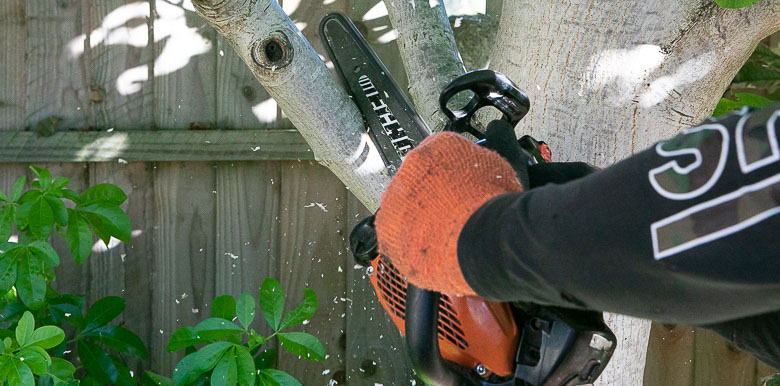Can I cut my neighbour’s tree?
If your neighbour’s tree overhangs your property, you are allowed to cut it – but only the parts that fall on your side of the boundary. If you cut any further, or cross over onto your neighbour’s property for any reason, you could be found liable for trespassing.

If the tree is on the boundary between your properties, you’ll need to check the legal documents you received when you purchased your home or consult your landlord if you’re a tenant. These documents will tell you who is responsible for the tree.
Normally, if a stump sits directly on the boundary line between two properties, it is equally owned by both homes. This means any action will need to be jointly agreed. However, the safest thing to do is check.
If you don’t have the documents, you can purchase them from the Land Registry for a small fee.
Do I need to get permission from my neighbour to cut the overhanging branches?
No, you don’t need to get permission from your neighbour. Cutting overhanging branches is classed as ‘abating a nuisance’ which means you don’t need to ask or give notice before you do it.
That said, you may find that some branches can only be removed from your neighbour’s side of the boundary. If this is the case, you will need permission to gain access to their land.
As a tip; just because you don’t have to notify your neighbour doesn’t mean you shouldn’t consider it. Not only is it an act of courtesy, but it’s wise to keep relations as friendly as possible (you are living next door to them, after all).
What can I do with the cuttings?
Your neighbour technically owns any cuttings or waste that you collect due to the job. This means you’re obligated to offer it back to them before you dispose of it. Failing to do so is an offence.
If your neighbour doesn’t want the cuttings, then you are responsible for getting rid of them (which doesn’t mean throwing them back onto your neighbour’s property).